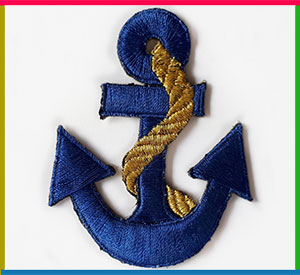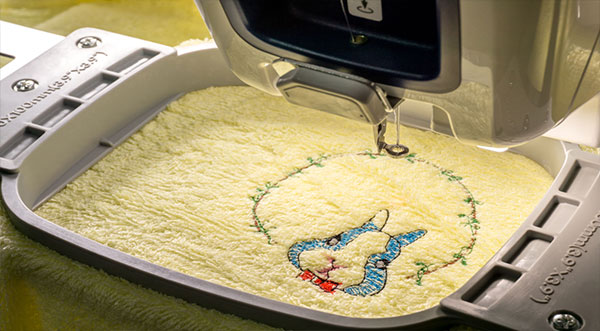 If you live under the delusion that you will only need digitizing software to digitize a logo, then you are dreaming! Yes, the process of scanning is a conversion of an image to a stitch, but digitizing a logo is different than that.
If you live under the delusion that you will only need digitizing software to digitize a logo, then you are dreaming! Yes, the process of scanning is a conversion of an image to a stitch, but digitizing a logo is different than that.
It requires a lot of patience, experience, and skills to scan a logo for your embroidery design. Furthermore, if you do not know how to digitize a logo for embroidery and then let us break it down for you, it’s a skill-based process that needs your maximum time.
Mastering skills and knowing when the process will take time are the two essential traits of an enthusiastic sewist.
So, without further ado, here is a guide to digitizing a logo for embroidery.
How To Digitize A Logo For Embroidery 2023?
The following are some necessary steps you need to know before you digitize a logo from an embroidery machine. These steps are less time-taking and are a perfect guide on digitize logos for embroidery.
 Before you start digitizing a logo, make sure to vectorize your logo in a program saved in CMX, EMF, WMF, or some other format suitable to the Studio. The studio is the digitizing software. We will manually digitize in this guide, as most of the digitizing work happens manually.
Before you start digitizing a logo, make sure to vectorize your logo in a program saved in CMX, EMF, WMF, or some other format suitable to the Studio. The studio is the digitizing software. We will manually digitize in this guide, as most of the digitizing work happens manually.
The essential step in this process is to import your scanned image. The scan is mostly deformed, distorted, or rotated. So, here is how to digitize a logo for printing or scanning.
Adjustment Of The Image
From the studio, go to the main menu to make the image appear in the background of your work area. You will find your ‘Embird.JPG’ image in the PATTERNS folder in the studio.
Before importing an image, the studio displays a notification that asks whether you wish to resize the image so that it may fit into the hoop or not. For now, select No, and we will discuss the sizing later.
The most crucial step is to make sure that the image is in a horizontal position. Tap on the main menu>image>Edit Image Window to open image adjustment settings.
On the first tab, you will find a rotating Image control option, tap on it to rotate your image to any position. Once you have sized the image, next, you need to crop the image. Crop the image like how you crop any other model on your device; by moving the crop lines near your logo. The cut-out area will be gray.
Now, click on the second image size and set the size you want. The third tab enables you to set any width to the empty border, which you will add to the image once it is down to the right size. The blank border comes in handy when digitizing, so the user does not sprain the edges.
Click on the Apply button, and your image will be set to perfection. Moreover, you can brighten your vision to enhance the digitizing process.
Digitizing Of Filled Area
Now, let’s get to the real part. For this part, we will use thin black outlines to outline patterns and fill in objects for spaces like nuts and letters.
All fill objects require parallel and long stitches that split into short stitches to prevent the thread from getting close. Due to these split stitches and their consistent angles, fill objects are useful for digitizing significant patterns.
Now, click the red color from the palette from the top right corner for the areas you are going to design. Click on the Fill tool to start placing your nodes. That is the part where the studio is in editing mode.
Join all nodes according to your design. The circular node points to the middle of the curve. On the other hand, the rectangular node leads to the end of the curve.
Once you have joined the nodes, open the pop-up menu, and click on Generate stitches. The finished letters will now be full of stitches.
After that, make sure all objects are on the object inspector. Digitize all notes the same way. Moreover, you can add color to the letters according to your preferences.
Digitizing of Outlines
In this part, we will add narrow stitch outlines to your logo. For this, you will need to draw the stitches, and the studio will run over the second stitch.
The studio offers a wide array of stitching outlines, but the thin stitch outline is the best one for digitizing. Click on the black color from the color palette. With the outline tool, create a nut outline. This part is a bit tricky, as you will need to draw shapes one by one.
Additional Improvements
Your design will look much better if we transform some portions into zig-zag. It will add a better look to your design.
Click on the blue area of the nut, and select parameters from right-click. Click on Auto Column from the Fill tab in the Parameters window, and then click on the OK button. As a result, your design is now full of stitches.
Useful Tips For Beginners
- Always layer your embroidered designs to add more dimensions. Besides that, layering helps you to focus only on those elements that are in the background.
- Set the stitch density according to the needs of your fabric. Moreover, be careful when digitizing embroidery designs.
- Make sure to set the text clearly—a bright and attractive letter is necessary for digitizing.
Conclusion
Now that you know how to digitize a logo for embroidery, you need to start working on your designs. Yes, it will take you a few hours to make it happen, but the results will surely satisfy you.
So follow this embroidery guide and take your passion for embroidery to the next level.

Leave a Reply